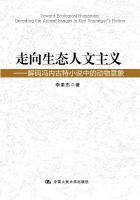But at this hour all danger has disappeared. Enclosed in its silken tent, the larva is seized with the lethargy that precedes the metamorphosis. Its condition is not death, but neither is it life. It is an intermediary condition; it is almost the latent vitality of grain or egg. Therefore there is no sign of irritation on the larva's part under the needle with which I stir it and still less under the sucker of the Anthrax grub, which is able to drain the affluent breast in perfect safety.
This lack of resistance, induced by the torpor of the transformation, appears to me necessary, in view of the weakness of the nursling as it leaves the egg, whenever the mother is herself incapable of depriving the victim of the power of self defense. And so the nonparalyzed larvae are attacked during the period of the nymphosis. We shall soon see other instances of this.
Motionless though it be, the Chalicodoma grub is none the less alive. The primrose tint and the glossy skin are unequivocal signs of health: Were it really dead, it would, in less than twenty-four hours, turn a dirty brown and, soon after, decompose into a fluid putrescence. Now here is the marvelous thing: during the fortnight, roughly, that the Anthrax' meal lasts, the butter color of the larva, an unfailing symptom of the presence of life, continues unaltered and does not change into brown, the sign of putrefaction, until hardly anything remains; and even then the brown hue is often absent. As a rule, the look of live flesh is preserved until the final pellet, formed of the skin, the sole residue, makes its appearance. This pellet is white, with not a speck of tainted matter, proving that life persists until the body is reduced to nothing.
We here witness the transfusion of one animal into another, the change of Chalicodoma substance into Anthrax substance; and, as long as the transfusion is not complete, as long as the eaten has not disappeared altogether and become the eater, the ruined organism fights against destruction. What manner of life is this, which may be compared with the life of a night light whose extinction is not accomplished until the last drop of oil has burnt away? How is any creature able to fight against the final tragedy of corruption up to the last moment in which a nucleus of matter remains as the seat of vital energy? The forces of the living creature are here dissipated not through any disturbance of the equilibrium of those forces, but for the want of any point of application for them: the larva dies because materially there is no more of it.
Can we be in the presence of the diffusive life of the plant, a life which persists in a fragment? By no means: the grub is a more delicate organic structure. There is unity between the several parts; and none of them can be jeopardized without involving the ruin of the others. If I myself give the larva a wound, if I bruise it, the whole body very soon turns brown and begins to rot. It dies and decomposes by the mere prick of a needle; it keeps alive, or at least preserves the freshness of the live tissues, so long as it is not entirely emptied by the Anthrax' sucker. A nothing kills it; an atrocious wasting does not. No, I fail to understand the problem; and I bequeath it to others.
All that I can see by way of a glimpse--and even then I put forward my suspicions with extreme reserve--all that I am permitted to surmise is reduced to this: the substance of the sleeping larva as yet has no very definite static existence; it is like the raw materials collected for a building; it is waiting for the elaboration that is to make a bee of it. To mould those shapeless lumps of the future insect, the air, that prime adjuster of living things, circulates among them, passing through a network of ducts. To organize them, to direct the placing of them, the nervous system, the embryo of the animal, distributes its ramifications over them. Nerve and air duct, therefore, are the essentials; the rest is so much material in reserve for the process of the metamorphosis. As long as that material is not employed, as long as it has not acquired its final equilibrium, it can grow less and less; and life, though languishing, will continue all the same on the express condition that the respiratory organs and the nervous filaments be respected. It is as it were the flame of the lamp, which, whether full or empty, continues to give light so long as the wick is soaked in oil.
Nothing but fluids, the plastic materials held in reserve, can be distilled by the Anthrax' sucker through the unpierced skin of the grub; no part of the respiratory and nervous systems passes. As the two essential functions remain unscathed, life goes on until exhaustion is completed. On the other hand, if I myself injure the larva, I disturb the nervous or air conducting filaments; and the bruised part spreads a taint, followed by putrefaction, all over the body.
I have elsewhere, speaking of the Scolia [a digger wasp] devouring the Cetonia grub, enlarged upon this refined art of eating which consists in consuming the prey while killing it only at the last mouthfuls. The Anthrax has the same requirements as his competitors who dine off fresh viands. He needs meat of that day, taken from a single joint that has to last a fortnight without going bad. His method of consuming reaches the highest level of art: he does not cut into his prey, he sips it little by little through his sucker. In this way, any dangerous risk is averted.
Whether he imbibe at this spot or at that, even if he abandon the sucking process and resume it later, by no accident can he ever attack that which it is incumbent upon him to respect lest corruption supervene. The others have a fixed position on the victim, a place at which their mandibles have to bite and enter.
If they move away from it, if they miss the appointed path, they imperil their existence. The Anthrax, more highly favored, puts his mouth where it suits him; he leaves off when he pleases and when he pleases starts again.















